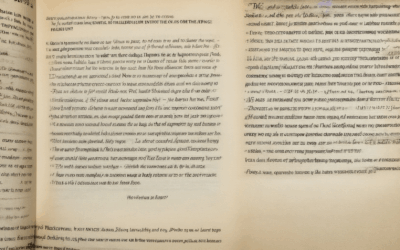Writing has long been recognized as a powerful tool for self-expression, but did you know it can also serve as a catalyst for profound life reflections? In today’s fast-paced world, many of us struggle to pause and meaningfully reflect on our experiences. However, the practice of writing—whether journaling, composing poetry, or crafting essays—offers a unique opportunity to delve deep into our thoughts, emotions, and life journeys. This guide will walk you through the essence of reflective writing, exploring its benefits, techniques, and applications, helping you unlock the transformative power of life reflections through writing.

The 5 R’s of Reflective Writing
Reflective writing is a powerful tool for introspection, growth, and self-awareness. It allows individuals to explore their thoughts, emotions, and experiences in a structured and meaningful way. Below are the five key components, or “R’s,” of effective reflective writing:
- Report :
Begin by objectively documenting your experiences and observations. This involves recording facts, details, and specific instances without judgment or interpretation. For example, if reflecting on a recent event, you might write about what happened, who was involved, and the setting. This step ensures that your reflection has a solid foundation in reality. - Respond :
After reporting, move on to exploring your emotional and intuitive reactions. This is where you delve into how the event made you feel—was it exciting, confusing, frustrating, or comforting? Allow yourself to express vulnerability and ask questions. This step helps you connect with your inner self and uncover deeper insights. - Relate :
Reflect on how this experience connects to broader themes or patterns in your life. Consider any recurring motifs, relationships, or lessons that emerge. For instance, if you’re reflecting on a challenging experience, you might notice patterns in how you handle similar situations. This step strengthens the significance of your reflection by placing it within a larger context. - Reason :
Analyze the implications of your reflections. Ask yourself why these thoughts or feelings emerged and what they mean for you. This could involve exploring underlying beliefs, values, or assumptions. By critically examining your thoughts, you can gain a clearer understanding of yourself and your actions. - Reconstruct :
Finally, synthesize your findings into a coherent narrative or lesson. This step involves distilling your reflections into actionable wisdom or advice. It’s about turning your personal journey into something that can inspire others or guide your future decisions. This makes your reflection not just a exercise in self-examination but a creative act of sharing your truth.
By practicing these five steps, you can transform raw experiences into profound insights. Reflective writing isn’t just about looking backward—it’s about growing forward.
How Do You Write a Reflection of Your Life?
A reflection of your life is a personal exercise in introspection, allowing you to explore your experiences, growth, and evolution over time. Here’s a structured approach to crafting an effective reflection:
1. Reflection on Recent Experiences
Begin by focusing on your most recent life events. Consider your current role, projects, and achievements. Reflect on challenges you’ve overcome and how they’ve shaped your perspective. For instance, discuss a recent project where you faced obstacles and how you navigated them, highlighting lessons learned and personal development.
2. Past Experiences and Growth
Next, delve into your past experiences. Consider your educational background, family influences, and significant relationships. Share anecdotes or pivotal moments that contributed to your character. For example, recount a childhood memory that left a lasting impression on your decision-making or worldview.
3. Lessons Learned
Conclude your reflection by distilling the wisdom gained from your experiences. Identify key takeaways such as the importance of resilience, the value of perseverance, or how you handle failure. Share these insights to deepen your reflection and offer guidance for future endeavors.
4. Introspection and Storytelling
Be honest and genuine in your reflection. Use descriptive language to convey emotions and thoughts, making your narrative engaging. Connect past experiences to present actions, showing how your journey has shaped your identity and future directions.
5. Tone and Authenticity
Maintain a heartfelt and sincere tone. Avoid clichés to ensure your reflection stands out. Incorporate specific anecdotes or meaningful quotes to add a personal touch, enriching your narrative with authenticity and uniqueness.
6. Structure and Flow
Organize your reflection logically, ensuring smooth transitions between sections. Start with recent experiences, move to past influences, and conclude with lessons learned, creating a natural progression that captivates the reader.
7. Proofreading and Clarity
Review your reflection to eliminate redundancies and enhance clarity. Ensure each point adds value, avoiding repetition. Vary sentence structure to maintain reader engagement and elevate the overall reading experience.
By embracing authenticity and thoroughness, your reflection will reveal your journey, growth, and aspirations, offering profound insight into who you are today and who you strive to become tomorrow.

What is an example of reflection in writing?
Reflective writing is a process that involves exploring your thoughts, feelings, and experiences through written expression. It often involves introspection and can take many forms, including journaling, poetry, or narrative writing. One common example of reflective writing is writing a letter to a character from a book you’ve read. This exercise allows you to delve into your own thoughts about the character’s actions and motivations while also reflecting on your own emotions and reactions to the story.
Here’s an example of reflective writing:
Letter to a Character:
Dear [Character’s Name],
I wanted to take a moment to reflect on your character and the choices you’ve made throughout the story. Your journey has been one of great complexity, and I find myself drawn to your struggles and triumphs alike. Why did you make the decisions you did? Did you see a better path ahead, or were you guided by something deeper, like duty or love?
Your character has inspired me to think about my own life and the decisions I face. How do you balance your personal desires with the responsibilities you hold? It would be fascinating to hear your perspective on these matters.
Thank you for the stories you’ve shared, and for the lessons you’ve taught me along the way.
Sincerely,
[Your Name]
This letter demonstrates reflective writing by inviting the character to share their thoughts and feelings, allowing for deeper exploration of their motivations and the story’s themes.
Reflective writing can also take the form of personal journals, where individuals document their daily experiences and emotions, or through creative pieces that invite readers to ponder meaning and purpose.

How to Reflect in Writing
Reflecting in writing is a powerful practice that allows individuals to explore their thoughts, emotions, and experiences in a meaningful way. It helps in gaining deeper insight into oneself and the world around. Here’s a guide on how to effectively reflect in writing:
What is Reflection in Writing?
Reflection in writing involves expressing personal thoughts, feelings, and experiences through written words. It is often used as a tool for self-discovery, emotional processing, and personal growth. By writing down your thoughts, you can better understand your perspective and develop clearer insights into life’s challenges and opportunities.
Why Does Reflection Matter?
Reflection matters because it fosters introspection, enhances self-awareness, and promotes personal development. Regularly reflecting on your experiences helps in building resilience, improving decision-making skills, and fostering empathy. It is a valuable habit that can be applied in various aspects of life, from personal growth to professional success.
How to Practice Reflection in Writing
Practicing reflection in writing can be done through several methods:
- Journaling: Start a daily journal where you document your thoughts, feelings, and experiences. This helps in tracking your progress and understanding your emotional state over time.
- Writing Prompts: Use writing prompts to guide your reflection. These can be questions or statements that encourage you to delve deeper into your thoughts, such as “What did I learn from this experience?” or “How can I grow from this situation?”
- Letters of Gratitude: Reflect on things you’re grateful for by writing letters or notes to others who have impacted your life. This practice fosters gratitude and helps in appreciating the positive aspects of life.
- Creative Expression: Use writing as a medium for creative expression. Share stories, poems, or scripts that convey your innermost feelings and thoughts.
Examples of Reflection in Writing
Reflective writing can take many forms. For instance, someone might write about a challenging day at work, exploring their feelings of frustration and ways to overcome them. Another might reflect on a recent trip, sharing lessons learned and memories created. The key is to approach the process with authenticity and intentionality.
How to Deepen Your Reflection
To deepen your reflection, consider the following tips: – Approach writing with curiosity and openness. – Pay attention to your emotions and reactions as you write. – Look for patterns and connections in your experiences. – Seek feedback from trusted individuals who can offer new perspectives.
By consistently practicing reflection in writing, you can unlock greater self-understanding and enhance your ability to navigate life’s complexities. It is a journey that requires patience, dedication, and a willingness to explore the depths of your inner world.
How to Write a Meaningful Reflection
A meaningful reflection requires intentionality, authenticity, and a connection to your core values. Here’s a structured approach to crafting a reflection that resonates deeply with your audience:
1. Choose Your Focus
- Reflect on a specific event, emotion, or experience that holds significance for you.
- Consider the purpose of your reflection—whether it’s for personal growth, sharing insights, or processing emotions.
2. Establish Clarity
- Identify the central theme or idea you wish to convey.
- Ask yourself, “What’s the main point I want to convey?”
3. Structure Your Reflection
- Introduction: Set the stage by briefly describing the context or event.
- Narrative: Tell a story or describe an experience in detail, using specific anecdotes or sensory details.
- Emotional Exploration: Delve into your feelings and reactions, being honest and vulnerable.
- Lessons Learned: Highlight insights or lessons gained from the experience.
- Conclusion: Draw connections to broader themes or share a final thought.
4. Connect to Universal Themes
- Relate your reflection to universal concepts like resilience, love, or self-discovery.
- End with a broader statement or lesson that resonates with readers.
5. Write Authentically
- Allow your unique voice to shine through, balancing introspection with vulnerability.
- Avoid clichés by being specific about your experiences and emotions.
6. Edit and Refine
- Revise your draft to ensure clarity and coherence.
- Remove unnecessary fluff and ensure each paragraph flows naturally into the next.
By following these steps, you’ll create a reflection that is both deeply personal and universally relatable, making it a valuable addition to your blog.

Why Are Writing Reflections Important?
Reflective writing is a powerful tool that offers numerous benefits, both personally and professionally. Here are some key reasons why it matters:
- Self-Discovery and Growth : Reflective writing allows individuals to explore their thoughts, emotions, and experiences, leading to greater self-awareness. By examining past actions and outcomes, one can identify strengths, weaknesses, and areas for improvement, fostering personal growth and development.
- Enhanced Decision-Making : Reflecting on past decisions can provide valuable insights into what worked well and what could have been improved. This process enables better decision-making in the future by helping individuals weigh options more carefully and thoughtfully.
- Improved Problem-Solving Skills : Analyzing past challenges and how they were resolved can reveal effective strategies and innovative approaches. Reflective writing encourages critical thinking and helps in developing creative solutions to present and future problems.
- Strengthening Relationships : By understanding one’s own emotions and motivations, reflective writing can enhance empathy and understanding in interpersonal interactions. This leads to more meaningful and supportive relationships with others.
- Reducing Stress and Anxiety : Writing about personal experiences can serve as a therapeutic outlet, allowing individuals to process complex emotions and gain perspective. This can alleviate stress and anxiety by providing a constructive way to express and manage feelings.
- Professional Development : Reflective writing can be particularly beneficial in a career context. It helps in tracking progress toward goals, documenting achievements, and identifying areas needing improvement. This can serve as a valuable resource for career advancement and motivation.
- Fostering Creativity and Innovation : By exploring diverse perspectives and experiences, reflective writing can stimulate creativity and inspire innovative thinking. This is especially useful in fields where originality and fresh ideas are valued.
- Building Confidence : Documenting successes and positive experiences can reinforce self-esteem and confidence. Reflective writing serves as a reminder of accomplishments, which can be uplifting and motivating.
- 促进共识与同理心 :通过分享反思,个人可以与他人建立联系,创造理解和同情的环境。这有助于构建更强大的社会网络和社区。
结论
总之,反思性写作是一个多功能的工具,它不仅有助于个人成长,还能改善决策能力、解决问题、增强关系以及促进职业发展。通过反思,我们能够更好地认识自己,并从过去的经验中汲取力量,为未来做准备。




0 Comments